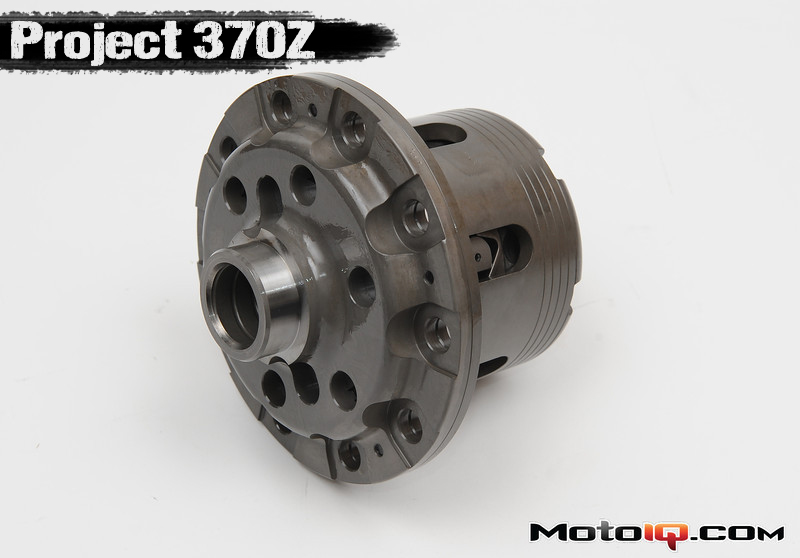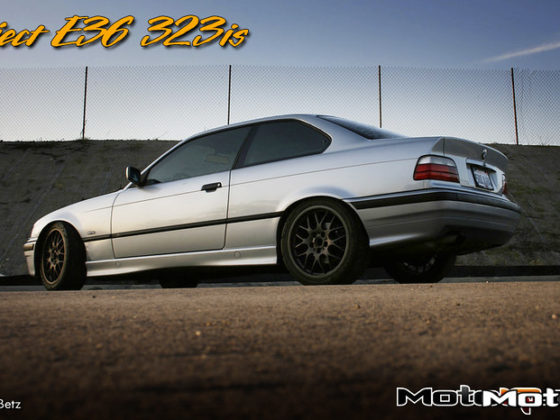
Project 370Z – Improving Grip by Tuning a Cusco RS LSD!
By Mike Kojima
So far with our Project 370Z we have been focused on dialing in the chassis. After some track time, it has become apparent that the rear differential is the next handicap in achieving faster lap times. Although the Z has a viscous limited slip diff from the factory, our testing has found it to be highly inadequate. In fact it is hardly a limited slip diff at all, allowing a lot of inside rear wheel spin, even out of medium speed corners. In some street tire testing at Buttonwillow our lap time was being limited to the low 2:06 range for configuration 13CW.
What we needed was a good mechanical limited slip, a Salisbury clutch type with good tuneabilty. Most people don't understand that the ability to tune a limited slip is very critical for good lap times. Most of the current clutch type differentials on the market are tuned for aggressive lock up to work well for drifting. Although this is great for drifting, it is not the best thing for getting the best exit speed from a corner. Most diffs on the market just want to squirt sideways on corner exit.
For greater flexibility in tuning our 370Z we chose a Cusco RS differential. The RS has tremendous flexibility in its set up, meaning you can tune it for everything from mild street diff for a low power car on small tires like an FR-S to the demands of a 700 whp Formula D drift car and everything in between. Check out the story and we will will walk you through some tricks in diff tuning and tell you more about the Cusco RS and why we picked it.
 |
| The Cusco RS is a Salisbury clutch type mechanical limited slip differential. We will get more into the specifics of that in a bit. The stock Nissan diff is a viscous coupling which gets its resistance to spinning just one tire from steel plates turning in a sealed drum of silicone goo about the consistency of snot. Although Viscous LSD's are good for smoothness and quietness, they suck for putting the power down due to all of the slip they have by design (sort of like the torque converter in an automatic transmission). The silicone snot also breaks down quickly and the diff loses what little effectiveness it had in a few track sessions. |
 |
| The Cusco RS has a forged steel case. The forging is much stronger than your typical cast case meaning that the case can be made thinner and lighter. The case has generous windows to the interior allowing for good flow of lubricating oil to the clutch packs making the diff run smoother and cooler. You can actually see the clutches here in through the circular windows. |
 |
| You can get a good look at the case thinness here. You can also see the cross shaft cams and pressure ring ramps through the side windows of the case. We will be explaining this all in a bit. |
 |
| We begin by removing the stock differential. The weird looking stuff on the rear diff cover is an ARC heat sink. These heat sinks supposedly give extra heat dissipation to whatever they are stuck on. Seems kinda sketchy but ARC has well engineered parts that work well in general. |
 |
| Howard Watanabe of Technosquare removes the rear diff cover to disassemble the stock diff. |




6 comments
Thank you for your really excellent explanation of how these components work.
One question: Gear type differentials (Torsen), appear to me to offer perfect distribution of power at all time. They are strong and require essentially no maintenance or replacement of parts.
What is the advantage of the Salisbury clutch type that you chose?
If the car was to be used exclusively on the street, would you have made the same choice?
They work better, torsens are really not that great.
Great write up, what lock rate was selected 60%, 80% or 100% for your build?
A youtube channel mentioned cusco recommended to leave it at 100% and only mess with the spring preload because with lower lock up rates the disc tend to run hotter. is this true?
Hey Mike – would you be able to do a detailed article on LSD tuning in all aspects?
1) Initial Breakaway torque
2) Ramp angles
3) Belleville thicknesses and spring rates
4) Different clutch plate treatments and surfaces
5) Different clutch plate materials (steel/carbon)
6) Tuning with different oils and additives
From the rabbit hole that i’ve gone down, it seems that most people only focus on the initial breakaway torque and that’s it. But having different spring rate bellevilles (cone washers) or stacking these washers also effect the LSD and how it behaves and reacts.
For example, the ATS carbon LSD needs ~250ftlb breakaway torque, but yet it doesn’t cause the wheels to skip/chatter in the parking lot. But a metal LSD with 80ftlb breakaway torque can skip/chatter with small steering input.
Something as simple as removing one of the belleville/cone washers and replacing it with a spacer and setting the same breakaway torque. How will that effect the LSD and driving?
Cheers, Mike
We did a few already, a couple of youtube video too. search is your friend.
We have several, use the search function. Videos too on youtube. We have never tuned an ATS diff before except for drifting and we didn’t like it and ended up going back to a spool.